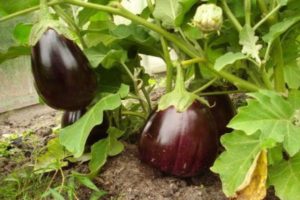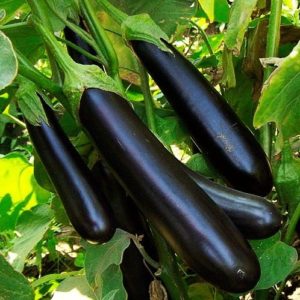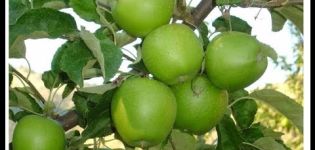Description and characteristics of eggplant Bourgeois, yield, cultivation and care
Bourgeois is an eggplant, which among gardeners is known not so much for its excellent taste as for its specific shape. The fruits of this variety are round, fleshy, and look more like tomatoes than eggplants. However, they do not become more whimsical in cultivation.
Characteristics of eggplant Bourgeois F1
Technically, Bourgeois is not yet a variety - it is a hybrid labeled F1, which means that it is in the process of breeding. You need to buy its seeds exclusively from trusted people who are related to plant breeding. Otherwise, the characteristics of the result may differ from the specified ones:

- height - about one and a half meters, and sometimes more;
- bushiness is high, the bushes grow in breadth, therefore it is better to plant them at some distance from each other;
- yield - average, up to a kilogram of fruit can be harvested from a square meter;
- commercial qualities - up to 90 percent of the fruits look presentable and are more than suitable for sale;
- early ripening - eggplants planted in May can be harvested at the end of August.
Bourgeois' fruits are fleshy, round, about 10 centimeters in diameter. The skin is thin, dark purple, the flesh is white, without cavities, without bitterness.
Like most eggplants, Bourgeois is not resistant to cold climates.
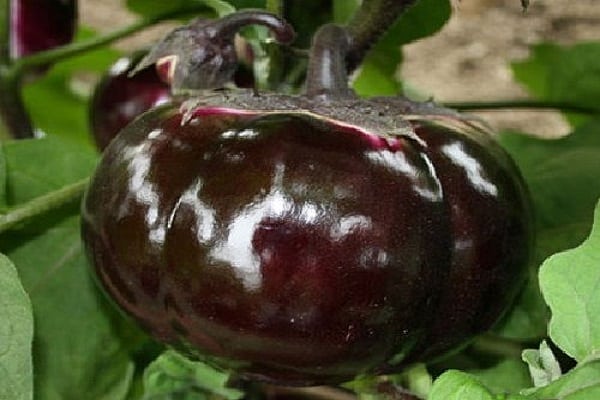
Advantages and disadvantages of the variety
Bourgeois has the following advantages:
- decent yield - not all varieties give 5 kilograms per meter;
- an unusual type of fruit - this does not affect the taste, but it can become a topic of conversation and increase the chances of selling the original vegetable;
- gradual ripening of the crop - eggplants are harvested not at once, but little by little, within a month after the first fruits ripen;
- resistance - Bourgeois has immunity to certain diseases.
Of the shortcomings, one can single out a long germination of seeds - about two weeks. In open ground all this time, it will not be easy to provide them with favorable conditions, therefore the entire future harvest may die already at the initial stage.
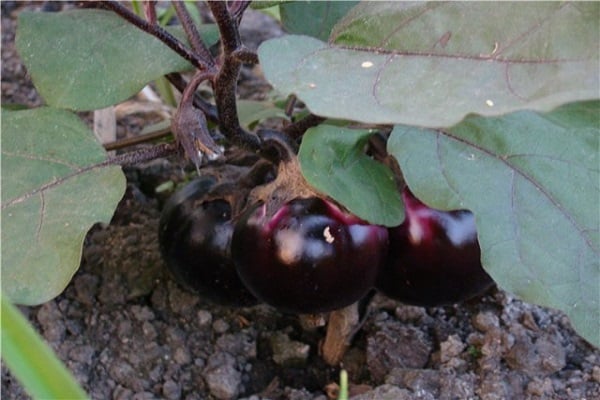
Growing features
In order for the Bourgeois to begin bearing fruit, first, of course, you will have to try and plant it correctly, and then take care of it correctly.
Planting seeds
In order for the seeds to sprout well - and not only partially - they need to be prepared:
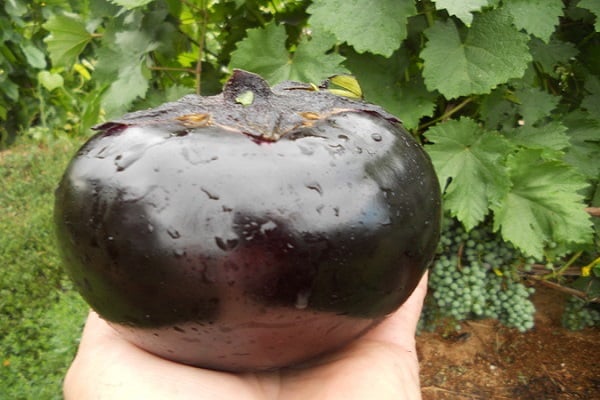
- Check for germination.You can lay them on a damp cloth and see which ones hatch in a week. Or you can put it in the water and see which ones come up, and then weed them out.
- Warm up. To do this, put a plate of seeds on the battery for a couple of days.
- Treat with a growth stimulant. Since the seeds of Bourgeois hatch for a long time, they are recommended to be treated with either a standard chemical agent, or, if you prefer homemade products, with aloe juice.
When the seeds are ready, they can be planted in open soil, but only if it is already warm enough outside. However, it is better not to take risks and still first grow them to strong seedlings that can withstand external conditions, even if they are unpleasant.
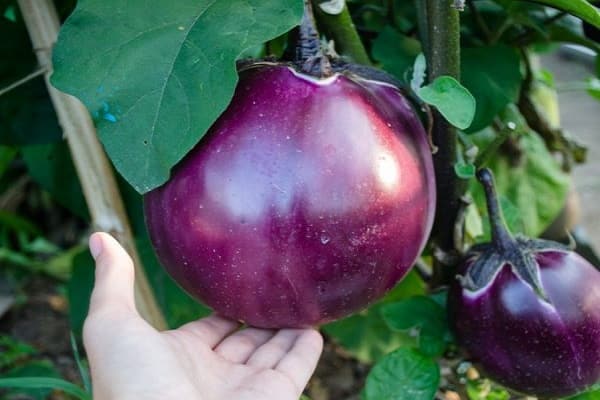
Sprout care
To get seedlings, prepared seeds must be planted in pots or any other container with soil. At the same time, you need to plant each seed in a separate container - eggplants do not like to compete for nutrients very much, this reduces the yield.
Seedlings need to be watered regularly so that the soil is always slightly moist. You also need to fertilize them - usually combined fertilizers are used in small quantities. Before disembarking, they need to be hardened - taken out into fresh air for a couple of hours.
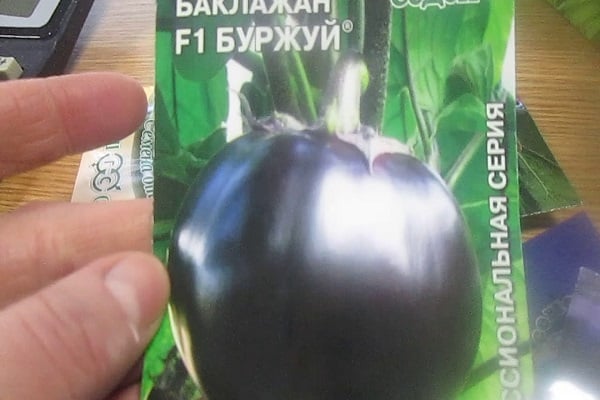
And all the time of growth, illuminate with fluorescent lamps or special lamps for growing plants, since the seedlings like long daylight hours and warmth.
Preparing the soil for planting
In order for the Bourgeois to take root well, the soil must be prepared:

- fertilize in autumn using organic matter - this will enrich it;
- then sprinkle with limestone - eggplants do not like high acidity;
- it will be good to put a layer of sawdust or dry grass under the layer of earth - eggplants love heat, and this is the best way to insulate the garden.
In general, Bourgeois loves light soils with low acidity, well-lit places, and the absence of a north wind.
It is important to remember that you cannot plant eggplant twice for the same place - this increases the likelihood of diseases or pests common to nightshades.
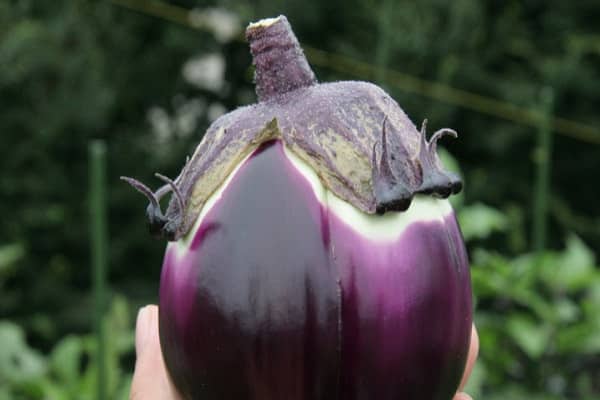
Transplanting
When it becomes warm enough (the soil warms up to at least thirteen degrees, which usually happens by May), the seedlings can be transplanted into open soil. The procedure is simple:
- dig a hole to the depth of the shovel blade;
- fill it with warm water;
- cross the bush from the pot into the hole;
- sprinkle with earth on top, but do not swat, otherwise there will be breathing problems.
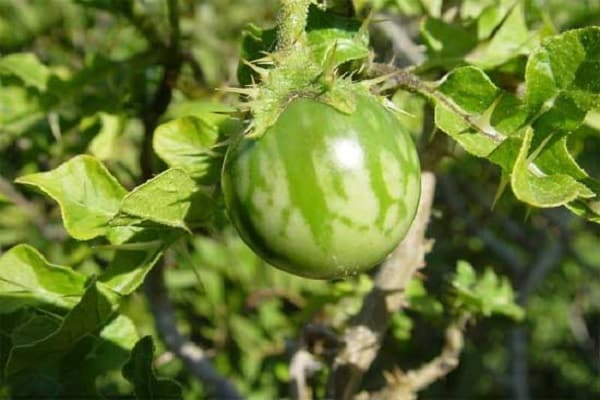
The first two weeks, the seedlings are watered every other day - young plants need a lot of moisture.
It is important that the pits are not more than three sprouts per square meter.
How to care for an eggplant
When the seedlings are planted in the ground, it remains only to properly care for it so that it grows into full-fledged bushes and gives fruit.
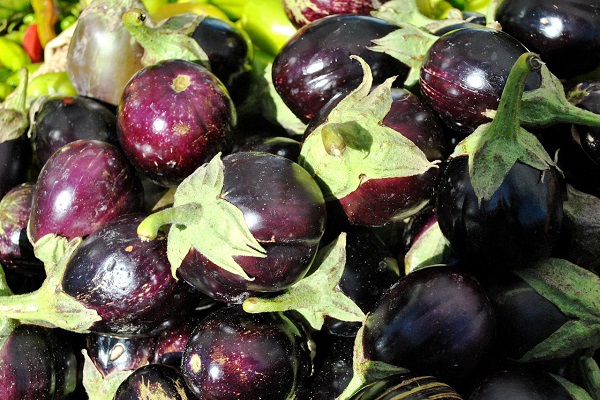
Watering and fertilizing
Water the bourgeois twice a week, at the root. The water must be heated in the sun, otherwise the roots will freeze.
Fertilize three times:
- two weeks after transplanting into the ground;
- when the first fruits begin to form;
- when the harvest begins.
For fertilization, either combined mixtures that can be found in the store are used, or compositions that can be prepared at home. For example, an infusion of chicken manure, mullein solution or green fertilizer, which is obtained by leaving weeds drenched in water to ferment for a week.

Bush formation
In order for Bourgeois to grow well, you need to provide him with selections - pegs on which the branches of a bush with heavy fruits can lean on. It is also necessary to cut it off - leave no more than five stepsons and no more than eight fruits, otherwise they will be small.
Eggplant is a sun-loving crop, so if the leaves cast a shadow over the flowers, they must be carefully trimmed.
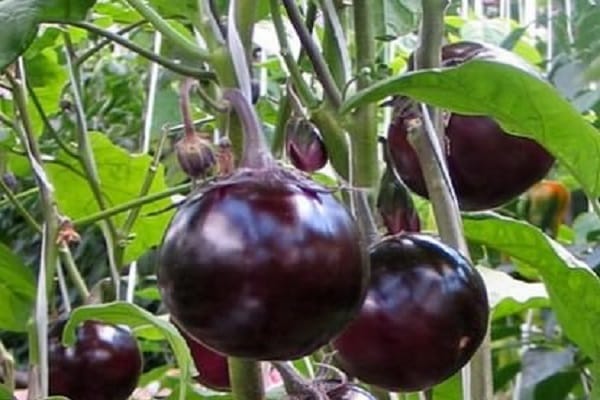
Disease and pest control
Eggplant has a list of major diseases and pests:
- Colorado beetle. Scared off by planting a number of horseradish, calendula, coriander, beans or basil. You can also harvest it by hand or sprinkle it with insecticides.
- Spider mite. The leaves turn yellow, dry up and crumble. They are treated with "Nitrofen", sulfur, acaricidal drugs.
- Blackleg. The section of the stem at the root weakens, turns black and breaks - it is not terrible for adult bushes, only seedlings. It is treated with potassium permanganate.
- Late blight. It manifests itself as brown spots on the leaves and stems. It is treated with copper sulfate.
Prevention also helps - the soil needs to be cultivated.

When and how to harvest
The fruits are harvested in late August or September. Cut off, leaving 5 centimeters of the stalk, try not to overexpose, otherwise the pulp will be bitter and it will be difficult to eat it.

Further storage
The fruits love coolness, they can lie no longer than one and a half months. It will not be possible to store them all winter, therefore it is recommended to roll them up.
Bourgeois is great for home preservation and homemade dishes like vegetable stew. It can even be eaten raw.

